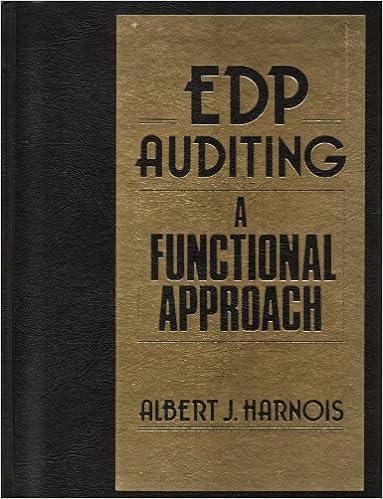Question
SallyMay, Inc., designs and manufactures T-shirts. It sells its T-shirts to brand name clothes retailers in lots of one dozen. SallyMay's May 2013 static budget
SallyMay, Inc., designs and manufactures T-shirts. It sells its T-shirts to brand name clothes retailers in lots of one dozen. SallyMay's May 2013 static budget and actual results for direct inputs are as follows:
Static Budget Number of T-shirt lots (1 lot1 dozen) 400
Per Lot of T-shirts: Direct materials 14 meters at $1.70 per meter$23.80 Direct manufacturing labor 1.6 hours at $8.10 per hour $12.96
Actual Results Number of T-shirt lots sold 450
Total Direct Inputs: Direct materials 6,840 meters at $1.95 per meter = $13,338 Direct manufacturing labor 675 hours at $8.20 per hour = $5,535
SallyMay has a policy of analyzing all input variances when they add up to more than 10% of the total cost of materials and labor in the flexible budget, and this is true in May 2013. The production manager discusses the sources of the variances: "A new type of material was purchased in May. This led to faster cutting and sewing, but the workers used more material than usual as they learned to work with it. For now, the standards are fine."
3.Calculate the direct materials and direct manufacturing labor price and efficiency variances in May 2013. What is the total flexible-budget variance for both inputs (direct materials and direct manufacturing labor) combined? What percentage is this variance of the total cost of direct materials and direct manufacturing labor in the flexible budget?
2.Sally King, the CEO, is concerned about the input variances. But she likes the quality and feel of the new material and agrees to use it for one more year. In May 2014, SallyMay again produces 450 lots of T-shirts. Relative to May 2013, 2% less direct material is used, direct material price is down 5%, and 2% less direct manufacturing labor is used. Labor price has remained the same as in May 2013. Calculate the direct materials and direct manufacturing labor price and efficiency variances in May 2014. What is the total flexible-budget variance for both inputs (direct materials and direct manufacturing labor) combined? What percentage is this variance of the total cost of direct materials and direct manufacturing labor in the flexible budget?
3.Comment on the May 2014 results. Would you continue the "experiment" of using the new material?
| Direct materials and direct manufacturing labor variances. | |||||||
| 1 | |||||||
| May 2013 | Actual Results | Price Variance | U/F | Actual Quantity X Budgeted Price | Efficiency Variance | U/F | Flexible Budget |
| Units | |||||||
| Direct materials | |||||||
| Direct labor | |||||||
| Total price variance | |||||||
| Total efficiency variance | |||||||
| Total flexible-budget variance for both inputs = | |||||||
| Total flexible-budget cost of direct materials and direct labor = | |||||||
| Total flexible-budget variance as % of total flexible-budget costs = | |||||||
| 2 | |||||||
| May 2014 | Actual Results | Price Variance | U/F | Actual Quantity X Budgeted Price | Efficiency Variance | U/F | Flexible Budget |
| Units | |||||||
| Direct materials | |||||||
| Direct manuf. labor | |||||||
| Total price variance | |||||||
| Total efficiency variance | |||||||
| Total flexible-budget variance for both inputs = | |||||||
| Total flexible-budget cost of direct materials and direct labor = | |||||||
| Total flexible-budget variance as % of total flexible-budget costs = | |||||||
If you could please show your work, thank you!
Step by Step Solution
There are 3 Steps involved in it
Step: 1

Get Instant Access to Expert-Tailored Solutions
See step-by-step solutions with expert insights and AI powered tools for academic success
Step: 2

Step: 3

Ace Your Homework with AI
Get the answers you need in no time with our AI-driven, step-by-step assistance
Get Started


